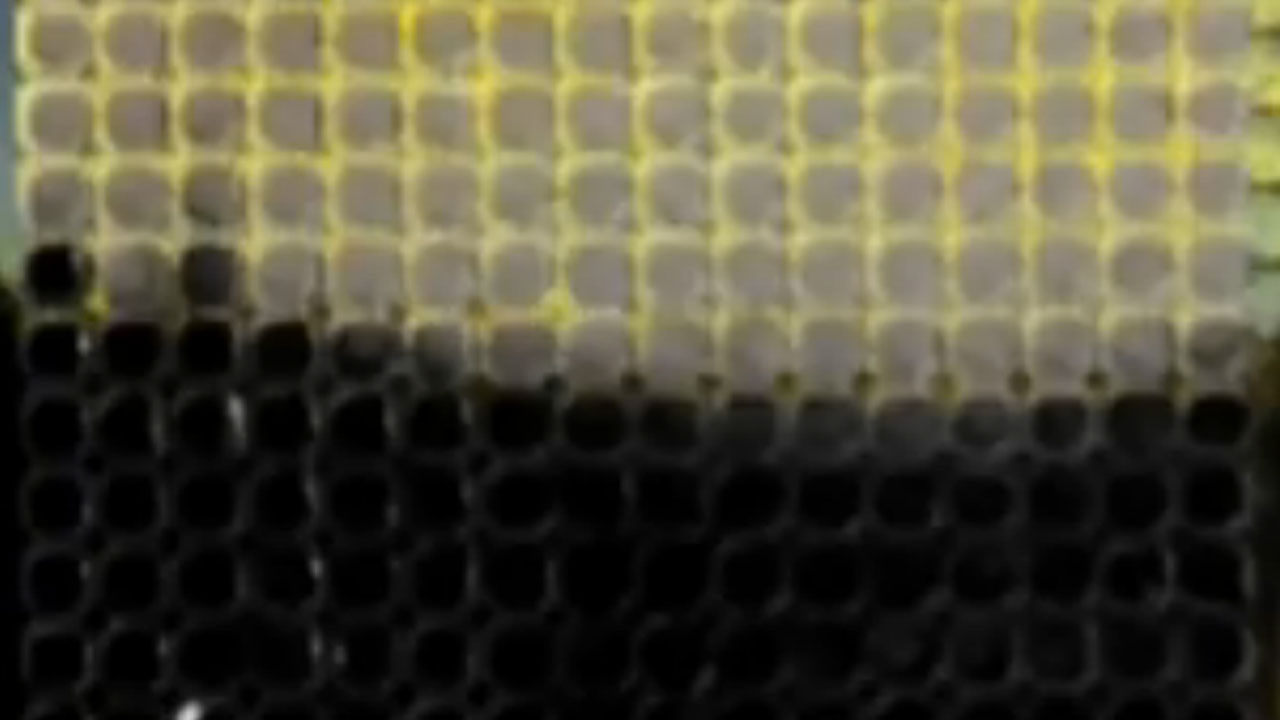Combining biology and wearable tech, scientist John Rogers and marine biologist Roger Hanlon have created a small prototype of electronic camouflage that imitates the skin of an octopus — a cephalopod that can change its color to match its surroundings.
“Real cephalopods are capable of levels of active camouflage orders of magnitude more sophisticated than our system,” Rogers told Popular Mechanics. “But we hope to eventually design manmade systems that rival those we see in biology.”
The tiny, complicated system manages to change colors based on temperature.
The top layer of the new device is loaded with a temperature-sensitive dye that appears black at low temperatures and clear at temps above 116 degrees F. This dye-filled layer sits on top of a layer of white reflective silver tiles, an ultra-thin layer of silicon circuits that control the dye’s temperature, and a transparent silicone rubber foundation. All together, this stack measures less than 200 microns thick. (The average human hair is 100 microns wide.)
Underneath this flexible sandwich is a base layer containing an array of light-sensing photodetectors. The corners of each dye-filled pixel and silver tile above this photoreceptor layer are notched, creating gaps that are like holes in a mask, allowing light to get through to the photoreceptors so they know how and when to change color. This adaptive camouflage system can respond to changing patterns of illumination within just one to two seconds.


